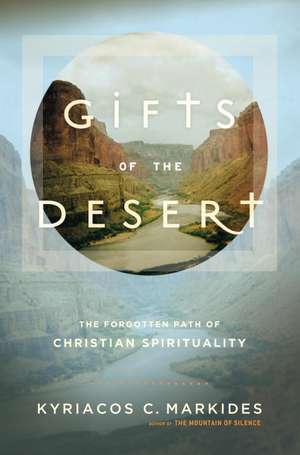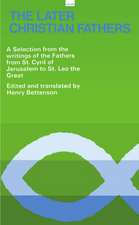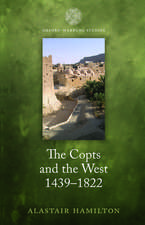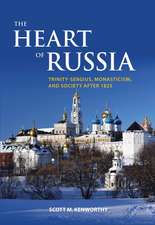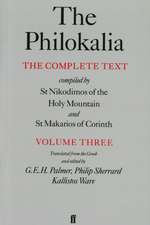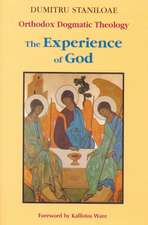Gifts of the Desert
Autor Kyriacos C. Markides, Markidesen Limba Engleză Paperback – 30 sep 2005
In his previous book The Mountain of Silence, Markides introduced us to the essential spiritual nature of Eastern Orthodoxy in a series of lively conversations with Father Maximos, the widely revered charismatic Orthodox bishop and former abbot of the isolated monastery on Mount Athos. In Gifts of the Desert, Markides continues his examination of Easter Orthodox mystical teachings and practices and captures its living expression through visits to monasteries and hermitages in Greece and America and interviews with contemporary charismatic elders, both male and female.
Markides’s pursuit of a deeper understanding of Orthodoxy takes him to the deserts of Arizona and a stay at a new monastery in Sedona; to the island of Cyprus and a reunion with Father Maximos; on a pilgrimage to holy shrines aboard a cruise ship in the Aegean Sea; and finally to the legendary Mount Athos, home to more than two thousand Orthodox monks. Markides relates his journey and reflections in a captivating style while providing important background material and information on historical events to give readers a highly accessible, in-depth portrait of a tradition little known in the West.
Gifts of the Desert will appeal to a wide range of people, from Christians seeking insights into their religion and its various expressions to scholars interested in learning more about the mystical way of life and wisdom that have been preserved on Mount Athos since the fall of the Byzantine Empire and the Great Schism that separated the Eastern and Western Churches. Perhaps most important, however, is the bridge it offers contemporary readers to a Christian life that is balanced between the worldly and the spiritual.
Preț: 114.68 lei
Nou
Puncte Express: 172
Preț estimativ în valută:
21.94€ • 22.91$ • 18.16£
21.94€ • 22.91$ • 18.16£
Carte disponibilă
Livrare economică 14-28 martie
Preluare comenzi: 021 569.72.76
Specificații
ISBN-13: 9780307885388
ISBN-10: 0307885380
Pagini: 384
Dimensiuni: 156 x 234 x 20 mm
Greutate: 0.54 kg
Editura: Doubleday Religion
ISBN-10: 0307885380
Pagini: 384
Dimensiuni: 156 x 234 x 20 mm
Greutate: 0.54 kg
Editura: Doubleday Religion
Notă biografică
KYRIACOS C. MARKIDES is an internationally respected authority on esoteric Christianity. He has written several books on Christian mysticism, including The Mountain of Silence, Riding with the Lion, and The Magus of Strovolos, the first volume in a trilogy on healers and mystics. Dr. Markides is a professor of sociology at the University of Maine, where he lives with his wife, Emily.
Extras
One
JOURNEY to SEDONA
It was dark when we entered Sedona, named after the wife of the nineteenth-century postmaster who helped keep the settlers in contact with the rest of the world. The relatively few neon lights testified to Sedona's reputation as a "New Age mecca," a center for alternative health practitioners and a mosaic of new religious movements. As we drove slowly through the downtown area to get a first glimpse of the place, I felt for a moment as if I had just entered Corinth during Saint Paul's time.
All the street lights were unusually dim, offering minimal illumination for pedestrians. Our friend Pat, who, together with her husband, Philip, had picked us up at the airport explained that the city council, wisely, had passed ordinances to protect the night from artificial light pollution. People could still look up and gaze at the Milky Way and experience the massive presence of the mountains, mute and silent, surrounding the desert town.
"Too much luminosity at night obstructs our capacity to reflect and contemplate our relationship to God and our place in the universe," Philip announced as he pressed the brakes at a stoplight.
His comment brought to my mind an experience I shared with my wife Emily during a visit to the Sivananda Yoga Retreat on Paradise Island, Nassau. I had been invited there to give a presentation on the lives and teachings of Eastern Orthodox saints and sages. Among the speakers was an astronomer who showed slides of outer space taken by the Hubble telescope. We were profoundly moved by what we saw, awed by the magnificence and beauty of the physical universe. One stunning photo showed an endless expanse of galaxies, billions of them, that the Hubble telescope managed to capture on film.
"You cannot see the colors now, but tomorrow, before your workshop, we will take you for a long hike," Pat promised. "You will then understand why we decided to settle here."
When Mary and Joan, two former Catholic nuns who had recently migrated to Sedona from the Northwest, invited me to offer a workshop "The Forgotten Path of Mystical Christianity" I accepted at once. Colleagues and friends familiar with that region of the Southwest assured me that Sedona is a dream place and that the beauty of the land is indescribable and "beyond this world."
There was another reason for accepting their invitation to fly from our home in Maine to Arizona. Southeast of Phoenix, at the heart of the Arizona desert, lay a recently established Greek Orthodox monastery named after Saint Anthony, the first Christian hermit, who spearheaded the monastic movement during the fourth century. I had heard unusual and controversial stories about the circumstances that led to the creation of the monastery, and being somewhat of a connoisseur and collector of extraordinary tales, I decided to go see it for myself. The monastery was set up during the mid-nineties. It was the creation of a venerated elder from Mount Athos, the inaccessible monastic republic in northern Greece and the subject matter of my research and writing during the previous ten years.1 A remnant of the Byzantine Empire, Mount Athos has served since the ninth century as a refuge for monks and hermits who, in that remote peninsula, preserved what many consider to be the mystical, holy tradition of early Christianity.
It was, therefore, a unique opportunity for Emily and me to combine our journey to Sedona with a six-day retreat at Saint Anthony's monastery. Frequent visits to monasteries have not only been necessary for my research but also have served as a source of spiritual renewal and rejuvenation, a balancing act to an otherwise cerebral, academic lifestyle. We had contemplated for some time the possibility of visiting the Arizona monastery to hear firsthand the details of how such an unlikely institution popped up in the heart of an American desert. Most important, after hearing legends about his charisma and extraordinary "gifts of the Spirit," we wished to meet the Athonite elder responsible for setting it up.
A further bonus of the Sedona trip was the opportunity to reconnect with our friends Philip and Pat, who volunteered to give us a lift from the Phoenix airport to Sedona, a two-hour drive. Thanks to our mutual interests in spiritual matters and in Cyprus, where they lived for a while on a Fulbright scholarship, we remained in touch.
"Keep in mind that while in Arizona, you must drink lots of liquids," Pat warned us after Philip, sighing with relief, got us out of the airport maze and onto the right interstate. "The air is extremely dry and your body needs water, plenty of it. You will soon find out that Arizona is very different from Maine, or Cyprus for that matter."
"Sedona," Philip said, pointing with his hand in the direction where we were heading, "is more conducive to spiritual work than any other place we have been to. It is really charged with healing energy. You will soon find out for yourself." After a pause, he continued, "We feel comfortable in Sedona because it is a center of diverse religious currents." Pat added that in fact the whole of Arizona offers itself for spiritual work: "One feels it in the very fabric of its landscape." Our friends were deeply spiritual, but not "religious" in the conventional sense.2 They represented the type of people I expected to encounter during my upcoming workshop.
"At this stage in our lives we needed a place where we can focus more on our spiritual growth and less on career and worldly achievements," Philip said. Over the years he had heroically managed to fight off melanoma through a combination of organic nutrition, alternative therapies, and systematic, deep meditation. "After all, as you know," he continued, "deserts offer themselves for spiritual work. Right? When we get there you will see what I mean. Sedona is vibrant with spiritual energy."
With such an introduction there was a heightened sense of anticipation about what awaited us ahead. When I mentioned the name of the monastery of Saint Anthony, it was all news to them. However, Philip quickly added that it did not surprise him that the Arizona desert was chosen as a fitting location for a monastery: "Whoever created it must have known that this area is a vortex of spiritual energy," he added with a smile as they dropped us off at a cozy inn built several miles above Sedona at the base of a lush and cool canyon.
Early the next morning, Pat and Philip took us on a two-hour hike through the canyons. As predicted by my friends, the outdoor excursion, instead of tiring me, filled me with energy. After a couple of hours' rest I felt ready to lead the workshop and face the 180 people who had flown in from around the country. Among the participants were a few mainstream Protestants, a number of disenchanted Catholics, former churchgoers of all denominations, New Age enthusiasts, holistic health practitioners, spiritualists, acolytes of Native American shamanism, liberal Jews, and aficionados of Eastern religions such as Hinduism, Tibetan Buddhism, and Zen. In addition to Emily and myself, there were two more Greek Orthodox, a father and his songwriter son, who appeared excited that I was to explore with all these diverse seekers the mystical tradition of Eastern Christianity.
With the exception of atheists, agnostics, and doctrinaire skeptics, much of the modern American multiethnic and multireligious landscape seemed to be represented. I was fascinated and slightly intimidated. Here was a gathering of mostly professional people, many of them disenchanted with the prevailing materialist worldview as well as with organized religion, who were in search of "authentic spirituality." In spite of all of America's enormous problems, domestic and international, I was not aware of any other society in the history of the world, I thought to myself as I faced my audience, to have provided such hospitable parameters for the free exploration of spirituality as contemporary America has done. Compared to the more religiously homogeneous societies of the past, in today's multicultural America one may belong to whatever religion one chooses without the fear of ostracism or the risk of being anathematized as a heretic. I shared these thoughts with my receptive audience in my opening remarks. It was a good start.
The presence of Philip, Pat, and Emily sitting in the front row, along with my two good friends Joan and Mary, the former Catholic nuns who organized the event, eased the mild nervousness I always feel when I first face a new audience. Before the formal introductions began, and until everybody found their seat, a local musician played a couple of her own mesmerizing and soothing compositions on a harp.
After a few jokes and before getting into the substance of the workshop, I asked the participants to reflect on a simple idea. I asked them to contemplate for a few seconds the myriad of coincidences that had brought us all together in a precise and perfect manner in that auditorium during that particular time. A seemingly minor change in our lives, I brought to their attention, would have drastically altered all the probabilities that had made our gathering a reality.
The moment I noticed a degree of receptivity in the participants' faces I engaged them in a simple exercise: "For five minutes write down on a piece of paper all the coincidences that you consider turning points in your life. Imagine how your life might have developed without those coincidences and experiences. You might then arrive at some interesting conclusions not only about your life but also about the nature and fabric of reality."
With the exception of one elderly lady, everybody showed readiness to participate in that brief and simple exercise of self-exploration. When the time was up I asked them, if they felt comfortable, to share what they wrote down with two strangers in the room for twenty minutes.
There was much commotion as people moved their chairs around in search of strangers. After the initial introductions they began to talk about their lives feverishly. I joined the group nearest to me. A buzzing energy swept the conference room, melting away barriers of anonymity and impersonality. When the twenty minutes were over it required an extra effort on my part to bring the group to order. I then proceeded to ask what the underlying meaning of this exercise might be beyond their getting to know one another. A woman volunteered an answer, that all the coincidences in our lives cannot be just random events but rather form part of a meaningful nexus of interconnectedness that defies any rational comprehension. Given the selective nature of the audience, it was not surprising to get similar responses from the other participants. As one put it: "It is important to remind ourselves that our lives are neither accidental nor coincidental."
"Yes. This is a spiritual axiom shared by most of the great teachers of humanity," I responded. "It is an antidote to contemporary feelings of alienation, self-estrangement, and meaninglessness. It is this primordial question of human destiny that we will explore today through the spiritual tradition and teachings of the holy elders of Eastern Christianity." I then went further to suggest that what may be true about our lives may also be true about the universe at large and mentioned the well-known aphorism "as above so it is below."
A Vietnam veteran (a fighter pilot, I learned later) asked me to elaborate on what I meant by that statement. "Today," I responded, "the majority of astrophysicists agree that our universe came into existence as a result of an original explosion that took place about fifteen billion years ago. It is what they call the Big Bang theory of the creation of the universe. They also agree that, had there been an infinitesimal alteration in temperature during the explosion, our universe as we have known it could not have come into existence. Any thinking human being, therefore, who reflects on creation must wonder that perhaps nothing in the cosmos is the arbitrary result of randomness. The probability that the universe is the product of such randomness is equal to the probability that, as British cosmologist Fred Hoyle once put it, a tornado sweeps through a junkyard and causes the creation of a fully operating jet plane.3 I am also reminded of what the leading contemporary philosopher of consciousness, Ken Wilber, once said--that any rational human being who contemplates the creation of the universe cannot but become an idealist. He implied by such a statement that an intelligent reality must be behind the creation of the world. Otherwise, he reasoned, how could the dust particles that came into existence at the moment of the cosmic explosion, presumably ex nihilo, have found each other and created such an intricate and infinitely complex universe? Wilber concluded that the mathematical formulas and the natural laws must have predated creation, a notion that would have found Plato in full accord. We must always keep in mind, therefore, that materialist science has the authority to tell us how things are only from the moment of the explosion until today. It has no legitimacy, no power to tell us anything of what happened or who was there prior to the explosion. It cannot tell us why the explosion took place in the first place. That is in the province of religion and spirituality, and the legitimate authorities on that subject are the great saints and prophets and not specialized scientists who may know next to nothing about spiritual realities.
"Therefore, what seems to be true about the universe," I concluded, "must also be true about our own lives. After all, we are an integral part of this wondrous universe. Based on this premise, our life cannot be accidental, but, as the Eastern Orthodox Christian elders insist, it is governed by spiritual laws set down by Providence within eternity. We will try to explore some of these laws today by studying the lives and teachings of sages and saints."
With the brief exercise behind us, I shared with my audience some of the key coincidences in my own life that set the stage for my involvement in and exploration of the Christian mystical tradition that we were about to examine.
"It all began on a trip to Mount Athos during the spring of 1991. As some of you might know, Mount Athos is a peninsula in northern Greece, thirty miles long by ten miles wide. For the last thousand years it has been a monastic republic and a refuge of Eastern Orthodox monks and hermits who have been practicing in silence an ancient, ascetic way of life that has as its primary goal union with God. I never could have imagined that a journey to one of these monasteries would have changed my life so decisively and so profoundly."
I then recounted my "accidental" encounter with Father Maximos, a young monk I met outside the gate of the first monastery I visited: "Like most people living in the modern world, I was suspicious of monasticism and considered it an institutional anachronism, a relic of the medieval Dark Ages. I originally traveled to Mount Athos out of curiosity and at the insistence of a friend who challenged me to overcome my prejudices and join him on a pilgrimage to the Holy Mountain to meet, as he put it, real spiritual elders whose luminous faces radiated the love of Christ.
From the Hardcover edition.
JOURNEY to SEDONA
It was dark when we entered Sedona, named after the wife of the nineteenth-century postmaster who helped keep the settlers in contact with the rest of the world. The relatively few neon lights testified to Sedona's reputation as a "New Age mecca," a center for alternative health practitioners and a mosaic of new religious movements. As we drove slowly through the downtown area to get a first glimpse of the place, I felt for a moment as if I had just entered Corinth during Saint Paul's time.
All the street lights were unusually dim, offering minimal illumination for pedestrians. Our friend Pat, who, together with her husband, Philip, had picked us up at the airport explained that the city council, wisely, had passed ordinances to protect the night from artificial light pollution. People could still look up and gaze at the Milky Way and experience the massive presence of the mountains, mute and silent, surrounding the desert town.
"Too much luminosity at night obstructs our capacity to reflect and contemplate our relationship to God and our place in the universe," Philip announced as he pressed the brakes at a stoplight.
His comment brought to my mind an experience I shared with my wife Emily during a visit to the Sivananda Yoga Retreat on Paradise Island, Nassau. I had been invited there to give a presentation on the lives and teachings of Eastern Orthodox saints and sages. Among the speakers was an astronomer who showed slides of outer space taken by the Hubble telescope. We were profoundly moved by what we saw, awed by the magnificence and beauty of the physical universe. One stunning photo showed an endless expanse of galaxies, billions of them, that the Hubble telescope managed to capture on film.
"You cannot see the colors now, but tomorrow, before your workshop, we will take you for a long hike," Pat promised. "You will then understand why we decided to settle here."
When Mary and Joan, two former Catholic nuns who had recently migrated to Sedona from the Northwest, invited me to offer a workshop "The Forgotten Path of Mystical Christianity" I accepted at once. Colleagues and friends familiar with that region of the Southwest assured me that Sedona is a dream place and that the beauty of the land is indescribable and "beyond this world."
There was another reason for accepting their invitation to fly from our home in Maine to Arizona. Southeast of Phoenix, at the heart of the Arizona desert, lay a recently established Greek Orthodox monastery named after Saint Anthony, the first Christian hermit, who spearheaded the monastic movement during the fourth century. I had heard unusual and controversial stories about the circumstances that led to the creation of the monastery, and being somewhat of a connoisseur and collector of extraordinary tales, I decided to go see it for myself. The monastery was set up during the mid-nineties. It was the creation of a venerated elder from Mount Athos, the inaccessible monastic republic in northern Greece and the subject matter of my research and writing during the previous ten years.1 A remnant of the Byzantine Empire, Mount Athos has served since the ninth century as a refuge for monks and hermits who, in that remote peninsula, preserved what many consider to be the mystical, holy tradition of early Christianity.
It was, therefore, a unique opportunity for Emily and me to combine our journey to Sedona with a six-day retreat at Saint Anthony's monastery. Frequent visits to monasteries have not only been necessary for my research but also have served as a source of spiritual renewal and rejuvenation, a balancing act to an otherwise cerebral, academic lifestyle. We had contemplated for some time the possibility of visiting the Arizona monastery to hear firsthand the details of how such an unlikely institution popped up in the heart of an American desert. Most important, after hearing legends about his charisma and extraordinary "gifts of the Spirit," we wished to meet the Athonite elder responsible for setting it up.
A further bonus of the Sedona trip was the opportunity to reconnect with our friends Philip and Pat, who volunteered to give us a lift from the Phoenix airport to Sedona, a two-hour drive. Thanks to our mutual interests in spiritual matters and in Cyprus, where they lived for a while on a Fulbright scholarship, we remained in touch.
"Keep in mind that while in Arizona, you must drink lots of liquids," Pat warned us after Philip, sighing with relief, got us out of the airport maze and onto the right interstate. "The air is extremely dry and your body needs water, plenty of it. You will soon find out that Arizona is very different from Maine, or Cyprus for that matter."
"Sedona," Philip said, pointing with his hand in the direction where we were heading, "is more conducive to spiritual work than any other place we have been to. It is really charged with healing energy. You will soon find out for yourself." After a pause, he continued, "We feel comfortable in Sedona because it is a center of diverse religious currents." Pat added that in fact the whole of Arizona offers itself for spiritual work: "One feels it in the very fabric of its landscape." Our friends were deeply spiritual, but not "religious" in the conventional sense.2 They represented the type of people I expected to encounter during my upcoming workshop.
"At this stage in our lives we needed a place where we can focus more on our spiritual growth and less on career and worldly achievements," Philip said. Over the years he had heroically managed to fight off melanoma through a combination of organic nutrition, alternative therapies, and systematic, deep meditation. "After all, as you know," he continued, "deserts offer themselves for spiritual work. Right? When we get there you will see what I mean. Sedona is vibrant with spiritual energy."
With such an introduction there was a heightened sense of anticipation about what awaited us ahead. When I mentioned the name of the monastery of Saint Anthony, it was all news to them. However, Philip quickly added that it did not surprise him that the Arizona desert was chosen as a fitting location for a monastery: "Whoever created it must have known that this area is a vortex of spiritual energy," he added with a smile as they dropped us off at a cozy inn built several miles above Sedona at the base of a lush and cool canyon.
Early the next morning, Pat and Philip took us on a two-hour hike through the canyons. As predicted by my friends, the outdoor excursion, instead of tiring me, filled me with energy. After a couple of hours' rest I felt ready to lead the workshop and face the 180 people who had flown in from around the country. Among the participants were a few mainstream Protestants, a number of disenchanted Catholics, former churchgoers of all denominations, New Age enthusiasts, holistic health practitioners, spiritualists, acolytes of Native American shamanism, liberal Jews, and aficionados of Eastern religions such as Hinduism, Tibetan Buddhism, and Zen. In addition to Emily and myself, there were two more Greek Orthodox, a father and his songwriter son, who appeared excited that I was to explore with all these diverse seekers the mystical tradition of Eastern Christianity.
With the exception of atheists, agnostics, and doctrinaire skeptics, much of the modern American multiethnic and multireligious landscape seemed to be represented. I was fascinated and slightly intimidated. Here was a gathering of mostly professional people, many of them disenchanted with the prevailing materialist worldview as well as with organized religion, who were in search of "authentic spirituality." In spite of all of America's enormous problems, domestic and international, I was not aware of any other society in the history of the world, I thought to myself as I faced my audience, to have provided such hospitable parameters for the free exploration of spirituality as contemporary America has done. Compared to the more religiously homogeneous societies of the past, in today's multicultural America one may belong to whatever religion one chooses without the fear of ostracism or the risk of being anathematized as a heretic. I shared these thoughts with my receptive audience in my opening remarks. It was a good start.
The presence of Philip, Pat, and Emily sitting in the front row, along with my two good friends Joan and Mary, the former Catholic nuns who organized the event, eased the mild nervousness I always feel when I first face a new audience. Before the formal introductions began, and until everybody found their seat, a local musician played a couple of her own mesmerizing and soothing compositions on a harp.
After a few jokes and before getting into the substance of the workshop, I asked the participants to reflect on a simple idea. I asked them to contemplate for a few seconds the myriad of coincidences that had brought us all together in a precise and perfect manner in that auditorium during that particular time. A seemingly minor change in our lives, I brought to their attention, would have drastically altered all the probabilities that had made our gathering a reality.
The moment I noticed a degree of receptivity in the participants' faces I engaged them in a simple exercise: "For five minutes write down on a piece of paper all the coincidences that you consider turning points in your life. Imagine how your life might have developed without those coincidences and experiences. You might then arrive at some interesting conclusions not only about your life but also about the nature and fabric of reality."
With the exception of one elderly lady, everybody showed readiness to participate in that brief and simple exercise of self-exploration. When the time was up I asked them, if they felt comfortable, to share what they wrote down with two strangers in the room for twenty minutes.
There was much commotion as people moved their chairs around in search of strangers. After the initial introductions they began to talk about their lives feverishly. I joined the group nearest to me. A buzzing energy swept the conference room, melting away barriers of anonymity and impersonality. When the twenty minutes were over it required an extra effort on my part to bring the group to order. I then proceeded to ask what the underlying meaning of this exercise might be beyond their getting to know one another. A woman volunteered an answer, that all the coincidences in our lives cannot be just random events but rather form part of a meaningful nexus of interconnectedness that defies any rational comprehension. Given the selective nature of the audience, it was not surprising to get similar responses from the other participants. As one put it: "It is important to remind ourselves that our lives are neither accidental nor coincidental."
"Yes. This is a spiritual axiom shared by most of the great teachers of humanity," I responded. "It is an antidote to contemporary feelings of alienation, self-estrangement, and meaninglessness. It is this primordial question of human destiny that we will explore today through the spiritual tradition and teachings of the holy elders of Eastern Christianity." I then went further to suggest that what may be true about our lives may also be true about the universe at large and mentioned the well-known aphorism "as above so it is below."
A Vietnam veteran (a fighter pilot, I learned later) asked me to elaborate on what I meant by that statement. "Today," I responded, "the majority of astrophysicists agree that our universe came into existence as a result of an original explosion that took place about fifteen billion years ago. It is what they call the Big Bang theory of the creation of the universe. They also agree that, had there been an infinitesimal alteration in temperature during the explosion, our universe as we have known it could not have come into existence. Any thinking human being, therefore, who reflects on creation must wonder that perhaps nothing in the cosmos is the arbitrary result of randomness. The probability that the universe is the product of such randomness is equal to the probability that, as British cosmologist Fred Hoyle once put it, a tornado sweeps through a junkyard and causes the creation of a fully operating jet plane.3 I am also reminded of what the leading contemporary philosopher of consciousness, Ken Wilber, once said--that any rational human being who contemplates the creation of the universe cannot but become an idealist. He implied by such a statement that an intelligent reality must be behind the creation of the world. Otherwise, he reasoned, how could the dust particles that came into existence at the moment of the cosmic explosion, presumably ex nihilo, have found each other and created such an intricate and infinitely complex universe? Wilber concluded that the mathematical formulas and the natural laws must have predated creation, a notion that would have found Plato in full accord. We must always keep in mind, therefore, that materialist science has the authority to tell us how things are only from the moment of the explosion until today. It has no legitimacy, no power to tell us anything of what happened or who was there prior to the explosion. It cannot tell us why the explosion took place in the first place. That is in the province of religion and spirituality, and the legitimate authorities on that subject are the great saints and prophets and not specialized scientists who may know next to nothing about spiritual realities.
"Therefore, what seems to be true about the universe," I concluded, "must also be true about our own lives. After all, we are an integral part of this wondrous universe. Based on this premise, our life cannot be accidental, but, as the Eastern Orthodox Christian elders insist, it is governed by spiritual laws set down by Providence within eternity. We will try to explore some of these laws today by studying the lives and teachings of sages and saints."
With the brief exercise behind us, I shared with my audience some of the key coincidences in my own life that set the stage for my involvement in and exploration of the Christian mystical tradition that we were about to examine.
"It all began on a trip to Mount Athos during the spring of 1991. As some of you might know, Mount Athos is a peninsula in northern Greece, thirty miles long by ten miles wide. For the last thousand years it has been a monastic republic and a refuge of Eastern Orthodox monks and hermits who have been practicing in silence an ancient, ascetic way of life that has as its primary goal union with God. I never could have imagined that a journey to one of these monasteries would have changed my life so decisively and so profoundly."
I then recounted my "accidental" encounter with Father Maximos, a young monk I met outside the gate of the first monastery I visited: "Like most people living in the modern world, I was suspicious of monasticism and considered it an institutional anachronism, a relic of the medieval Dark Ages. I originally traveled to Mount Athos out of curiosity and at the insistence of a friend who challenged me to overcome my prejudices and join him on a pilgrimage to the Holy Mountain to meet, as he put it, real spiritual elders whose luminous faces radiated the love of Christ.
From the Hardcover edition.
